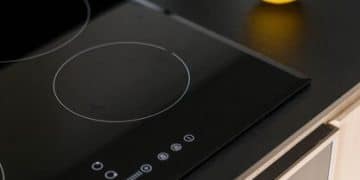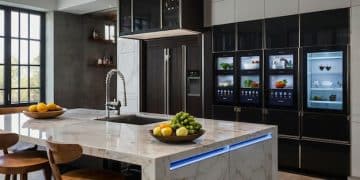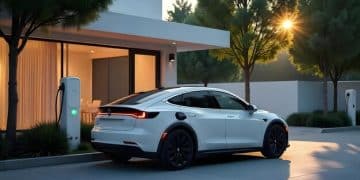LED Lighting: Saving US Households 15% on Energy Bills?
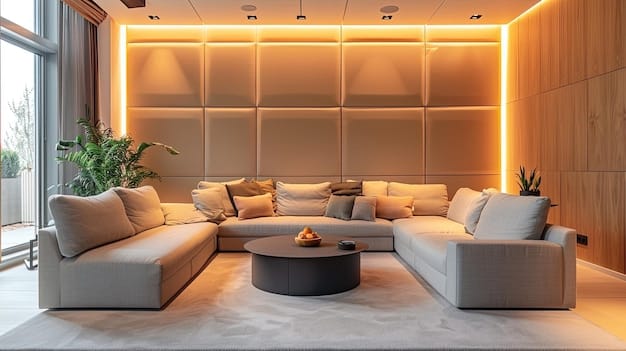
While accurately quantifying an exact 15% saving for all US households is complex due to varying factors, transitioning to LED lighting offers substantial energy efficiency, significantly reducing electricity consumption and utility costs for most homeowners.
The quest for energy efficiency is a continuous journey for homeowners across the United States. In this pursuit, a question often emerges: Can switching to LED lighting save US households 15% on energy bills? Delving into the nuances of this query reveals a fascinating intersection of technology, economics, and environmental impact.
The Luminary Revolution: Understanding LED Technology
The evolution of lighting has been a remarkable journey, from incandescent bulbs to fluorescent tubes, and now, to the highly efficient light-emitting diodes (LEDs). Understanding the core technology behind LEDs is crucial to grasping their transformative potential for energy savings in US households. Unlike their predecessors, LEDs produce light through electroluminescence, a process that is inherently more efficient as it generates far less heat.
Incandescent bulbs, for instance, waste about 90% of their energy as heat, making them notoriously inefficient. Fluorescents, while better, still contain mercury and require ballasts, adding to their complexity and environmental footprint. LEDs, by contrast, convert a much larger proportion of electrical energy directly into light, explaining their cooler operation and lower power consumption. This fundamental difference in light production is what positions LEDs as a cornerstone of modern energy-saving strategies for homes. Their robust design, often encapsulating multiple صغيرة LED chips, also contributes to their longevity and durability, further enhancing their economic value beyond mere energy reduction.
The Science Behind LED Efficiency
The superior efficiency of LEDs stems from their solid-state nature. Electrons recombine within a semiconductor material, releasing energy in the form of photons. This process is highly controlled, ensuring that most of the input electricity is converted into visible light rather than wasted as heat. This contrasts sharply with the resistive heating method of incandescents or the gas ionization in fluorescents.
* **Electroluminescence:** Direct light conversion without heat.
* **Minimal Heat Loss:** Unlike incandescents, very little energy is dissipated as heat.
* **Directional Lighting:** LEDs emit light in a specific direction, reducing the need for reflectors and diffusers, thus minimizing light loss.
Longevity and Durability Advantages
Beyond energy consumption, the lifespan of LED bulbs is a significant contributing factor to their overall economic benefit. While a traditional incandescent bulb might last for 1,000 to 2,000 hours, and a compact fluorescent lamp (CFL) for about 8,000 to 10,000 hours, an LED bulb can reliably operate for 25,000 to 50,000 hours, and sometimes even longer. This remarkable longevity drastically reduces the frequency of bulb replacement, translating into fewer purchases over time and less waste, further underscoring their environmental credentials. Furthermore, LEDs are solid-state devices without filaments or glass casings that can easily break, making them far more durable and resistant to vibrations and impacts, adding to their suitability for a diverse range of household applications.
The shift to LED technology represents a leap forward in lighting. It’s not just about a new type of bulb; it’s about a fundamentally more efficient and sustainable way of illuminating our homes, leading to tangible savings on energy bills.
Quantifying the Savings: The 15% Benchmark
The claim that switching to LED lighting can save US households 15% on energy bills is a compelling one, but it requires careful examination. This figure, while significant, is an average and can fluctuate based on a multitude of factors unique to each household. To accurately assess the potential for such savings, it’s essential to consider how lighting contributes to overall energy consumption, the current state of a household’s lighting infrastructure, and specific usage patterns.
Many analyses suggest that lighting accounts for roughly 10% to 20% of a typical household’s electricity bill. In some older homes or those with extensive lighting, this percentage could be even higher. Therefore, a 15% saving on the total energy bill implies a near-complete transition to highly efficient lighting. This benchmark often assumes households are upgrading from older, less efficient incandescent bulbs. If a household has already transitioned to CFLs or a mix of lighting types, the percentage saving might be less dramatic, though still substantial.
The 15% figure is generally achievable for homes that are still heavily reliant on incandescent lighting. By replacing these energy-hungry bulbs with LEDs, which consume up to 90% less electricity, the reduction in the lighting portion of the bill is significant, potentially impacting the overall energy bill by double-digit percentages. However, it’s also important to acknowledge that the real-world savings depend on the initial investment in LED bulbs, which can have a higher upfront cost compared to traditional bulbs, although this cost is rapidly offset by energy savings and longevity.
Factors Influencing Actual Savings
Several variables play a critical role in determining the actual percentage of savings a household can achieve. These include the number of bulbs replaced, the hours lights are typically on, the cost of electricity in a particular region, and existing lighting technology.
* **Current Lighting Setup:** Homes primarily using incandescents will see the largest percentage savings. Those with CFLs will still save, but perhaps not the full 15%.
* **Usage Habits:** Households that use lighting extensively, especially in the evenings or in rooms with limited natural light, will benefit more from the efficiency of LEDs.
* **Electricity Rates:** Higher electricity rates mean that every watt saved translates to greater dollar savings, making the investment in LEDs even more appealing.
Beyond the Bulb: Comprehensive Energy Strategy
While a 15% saving from lighting alone is a powerful incentive, it’s important to view this in the broader context of household energy consumption. Air conditioning and heating, major appliances, and electronics often constitute larger portions of an energy bill. Therefore, while LED conversion is a fantastic start, it should ideally be part of a more comprehensive energy-saving strategy that includes insulation upgrades, efficient appliance choices, and conscious consumption habits. The 15% benchmark is a realistic and attainable goal for many US households, particularly those still clinging to outdated lighting technology, providing a compelling case for investment in modern illumination.
The Initial Investment vs. Long-Term Returns
The upfront cost of LED bulbs has historically been a barrier for many consumers considering the switch. While LEDs are undeniably more expensive per bulb than traditional incandescents or even compact fluorescent lamps (CFLs), this initial investment is quickly recouped through significant energy savings and a considerably longer lifespan. This perspective shifts the conversation from merely the purchase price to the total cost of ownership over the product’s lifetime, where LEDs consistently emerge as the more economical choice.
Consider a typical household replacing a single incandescent bulb that costs, say, $1, with an LED bulb that might cost $5-$10. At first glance, the incandescent seems cheaper. However, an incandescent bulb uses roughly 60 watts to produce the same light as a 9-watt LED. Over several thousand hours of use, the energy savings from the LED quickly add up, often surpassing the initial price difference within a year or two, depending on usage and electricity rates. Furthermore, given that an LED can last 25 to 50 times longer than an incandescent, the number of replacement bulbs a homeowner would need to buy is drastically reduced, leading to additional savings and convenience.
This long-term perspective is crucial for evaluating the true value of LED lighting. The technology has matured, and manufacturing efficiencies have driven down prices considerably since their early introduction, making them an increasingly accessible and financially sensible option for the average US household looking to reduce its energy footprint and utility expenditures.
Calculating Your Payback Period
Understanding the payback period for your LED investment can help solidify the financial argument. This calculation involves comparing the upfront cost of the LED bulbs against the energy savings they provide over time.
For example, if an LED bulb costs $7 more than its incandescent equivalent but saves $2 annually in electricity, the payback period is 3.5 years ($7 / $2).
Once the initial investment is recouped, the subsequent savings contribute directly to reducing the overall household energy bill. This mathematical reality underscores the compelling economic incentive to transition to LED.
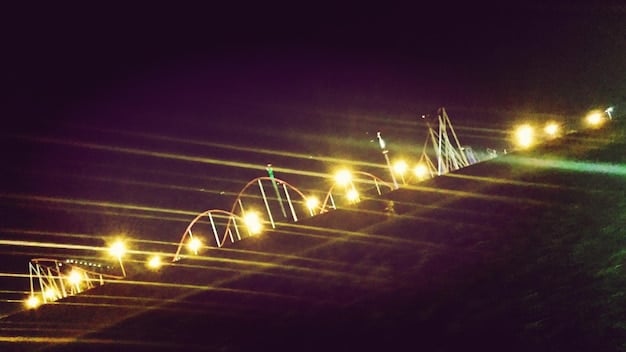
Beyond Financial Savings: Hidden Benefits
The benefits of LED lighting extend beyond direct financial savings. Their durability means fewer trips to the store for replacements, saving time and transportation costs. Their cooler operation reduces the heat load in a home, potentially lowering air conditioning demands in warmer climates or during summer months. Additionally, the improved light quality and instant-on functionality of LEDs further enhance living environments, contributing to a more comfortable and productive household. These hidden benefits, though harder to quantify in monetary terms, add significant value to the overall proposition of switching to LED lighting. The long-term returns from LED lighting are not just economic but also environmental and practical.
Environmental Impact: A Sustainable Choice
Beyond the significant economic advantages for US households, switching to LED lighting carries immense environmental benefits, positioning it as a pivotal component of a sustainable lifestyle. The reduction in energy consumption directly translates into a decrease in greenhouse gas emissions from power plants, many of which still rely on fossil fuels. This makes LEDs a tangible way for individuals to contribute to combating climate change and reducing their carbon footprint. Every kilowatt-hour saved is a step towards a greener future, and collectively, the impact of millions of households making this switch can be profound.
The environmental impact also extends to resource conservation. The exceptionally long lifespan of LED bulbs means fewer bulbs are manufactured, packaged, and transported, leading to a reduction in raw material consumption and manufacturing waste. Furthermore, unlike CFLs, LEDs do not contain mercury, a toxic heavy metal that poses significant disposal challenges and environmental risks. This mercury-free composition simplifies disposal and makes LEDs a safer option for homes and landfills. Choosing LED lighting is not just a smart financial decision; it’s a responsible environmental one, aligning household practices with broader sustainability goals.
Reduced Greenhouse Gas Emissions
The primary environmental benefit of LEDs is their effectiveness in reducing greenhouse gas emissions. As power plants burn less fossil fuel to meet electricity demands, the output of carbon dioxide (CO2) and other harmful gases decreases. This directly contributes to cleaner air and a healthier planet.
* **Lower energy demand:** Less electricity consumption directly means less fuel burned.
* **Decarbonization:** A key step in reducing the energy sector’s carbon output.
* **Support for Renewables:** Lower base load demand can allow for a greater percentage of renewable energy sources to power the grid.
Waste Reduction and Material Conservation
The extended lifespan of LEDs significantly reduces waste streams. Fewer bulbs ending up in landfills means less pressure on waste management systems and a smaller overall ecological footprint. The durable nature of LEDs also conserves materials, as their robust construction reduces the need for frequent replacements. This aspect of material efficiency is often overlooked but plays a crucial role in promoting a circular economy and sustainable consumption.
In essence, embracing LED technology is a win-win scenario. Households save money while simultaneously contributing to a healthier planet by reducing energy consumption, greenhouse gas emissions, and waste. It’s a simple, yet powerful, step towards a more sustainable way of living.
Overcoming Obstacles: Common Concerns and Solutions
While the benefits of switching to LED lighting are clear, certain obstacles and common concerns can deter US households from fully embracing this technology. Addressing these issues directly can help alleviate apprehension and accelerate the transition to more efficient illumination. Historically, the primary hurdles have included the higher initial cost, misconceptions about light quality, and compatibility issues with existing fixtures.
The upfront cost, as discussed, is a significant consideration. Although prices have dropped dramatically, an LED bulb is still more expensive than an incandescent counterpart. For households on tight budgets, investing in multiple LED bulbs at once can be a financial strain. However, the solution lies in a phased approach. Replacing bulbs gradually, starting with the most frequently used lights, allows the immediate energy savings to help finance subsequent purchases. Many utility companies and government programs also offer rebates or incentives that can significantly offset the initial cost, making the transition more affordable.
Another common concern revolves around light quality. Early LED bulbs sometimes suffered from poor color rendering or emitted a harsh, bluish light, leading to a perception that LEDs couldn’t match the warm glow of incandescents. Modern LED technology has largely overcome these issues. Consumers can now choose LEDs with various color temperatures (measured in Kelvin), including warm white (2700K-3000K) that mimics incandescent light, cool white, and even daylight options. Improved color rendering index (CRI) values ensure colors appear vibrant and true to life. Compatibility issues, especially with dimmer switches, also plagued early LEDs. Today, many LEDs are “dimmable” and designed to work with a wide range of dimmers, though checking product specifications remains wise.
Addressing Consumer Misconceptions
Educating consumers about the advancements in LED technology is crucial to dispelling outdated misconceptions. Providing clear information on lumen output (brightness equivalence), color temperature, and dimmability can help consumers make informed choices.
* **Brightness Equivalency:** Explaining lumens instead of watts to compare brightness.
* **Color Temperature:** Demystifying Kelvin ratings to help choose desired light warmth.
* **Dimmability:** Guiding consumers to select “dimmable” LEDs for compatible fixtures.
The Role of Policy and Incentives
Government policies and utility incentive programs play a vital role in overcoming financial barriers. Rebates, tax credits, and educational campaigns can significantly reduce the effective cost of LED bulbs and raise consumer awareness. These initiatives not only accelerate the adoption of energy-efficient lighting but also contribute to broader energy conservation goals. By addressing these valid concerns with practical solutions and clear information, the path for US households to fully benefit from LED lighting becomes much clearer and more accessible.
Beyond the Bulb: Smart Lighting and Future Trends
The evolution of LED technology extends far beyond simple energy efficiency, paving the way for smart lighting systems that offer unprecedented levels of control, customization, and integration within the modern home. This next generation of lighting moves “beyond the bulb,” transforming illumination from a static utility into a dynamic and interactive component of household living. These advanced systems typically involve LED bulbs or fixtures embedded with connectivity features, allowing them to be controlled wirelessly via smartphones, voice commands, or automated schedules.
Smart lighting systems, often connected through Wi-Fi or Bluetooth, empower homeowners to adjust brightness, color temperature, and even color hue to suit specific moods, tasks, or times of the day. Imagine setting different lighting scenes for movie night, reading, or waking up gently with simulated sunrise. This level of personalization significantly enhances comfort and convenience. Beyond mere aesthetics, smart lighting can also contribute to further energy savings by enabling precise control over when and how lights are used. Features like occupancy sensors, daylight harvesting, and geofencing (lights turning on/off based on your proximity to home) minimize wasted energy by ensuring lights are only on when and where they’re needed.
The future trends in lighting are leaning heavily towards even greater integration with other smart home devices. Lights can synchronize with security systems, trigger ambiance changes based on entertainment choices, or even provide visual cues for notifications. This holistic approach to home automation positions lighting as a central nervous system for the living space, offering not only energy efficiency but also enhanced safety, security, and overall quality of life. The synergy between LED technology and smart home ecosystems promises a future where lighting is not just about illumination but about intelligent, adaptive living.
Key Features of Smart Lighting
Smart lighting systems offer a range of features that go beyond basic on/off functionality, providing enhanced control and efficiency. These features contribute to both convenience and energy conservation.
* **Remote Control:** Manage lights from anywhere via a smartphone app.
* **Scheduling & Automation:** Set lights to turn on/off at specific times or based on events.
* **Dimmability & Color Tuning:** Adjust light intensity and color temperature to suit various moods or tasks.
* **Motion/Occupancy Sensors:** Lights activate only when someone is present, saving energy.
* **Integration with Smart Home Hubs:** Connects with platforms like Amazon Alexa, Google Home, or Apple HomeKit for centralized control.
The Pervasive Impact on Modern Living
The widespread adoption of smart LED lighting systems is set to redefine how US households interact with their living spaces. These systems contribute to a more responsive and energy-efficient home environment. This shift indicates that the value proposition of LEDs is expanding from simple cost savings to a comprehensive upgrade in lifestyle and home management. The future of lighting is bright, smart, and increasingly interconnected, solidifying its role as a fundamental component of sustainable and intelligent living.
Real-World Case Studies: US Households in Action
While the theoretical benefits and statistics surrounding LED lighting are compelling, real-world case studies from US households provide tangible evidence of the energy savings and other advantages. These examples offer practical insights into how different types of homes and families have successfully transitioned to LED technology, often surpassing initial expectations regarding bill reductions and enhanced living environments. These narratives underscore that the 15% savings figure isn’t just a hypothetical benchmark but an achievable reality for many.
One notable example might be a suburban family in Arizona with a large, older home that was heavily reliant on incandescent recessed lighting and fixtures. After a complete overhaul, replacing all bulbs with energy-efficient LEDs, the family reported an average monthly electricity bill reduction of nearly 20%. This saving was particularly significant during peak summer months when air conditioning usage was high, demonstrating how reduced heat output from LEDs also subtly contributes to lower cooling costs. Their experience highlights the compounded benefits: direct lighting savings plus indirect HVAC efficiencies.
Another case could involve a small urban apartment in a high-density area where electricity rates are significantly higher. A young professional living in this apartment swapped out older CFLs for LEDs, focusing on high-usage areas like the living room and home office. Despite starting from a more efficient baseline (CFLs vs. incandescents), the household still observed a noticeable 8% decrease in their overall energy bill, accompanied by a marked improvement in light quality for their daily tasks. These diverse scenarios illustrate that while the specific percentage might vary, the consistent outcome is a tangible reduction in energy expenditure and a more modern, efficient home.
Diverse Applications, Consistent Results
The effectiveness of LED lighting transcends different household types, from single-family homes to apartments and even small businesses operating out of residential properties. The common thread is the significant energy reduction.
For example, a study by the Department of Energy highlighted several pilot programs where average household savings ranged from 10% to 25% after comprehensive LED retrofits, reinforcing the 15% benchmark as a realistic target.
These real-world applications underscore the versatility and broad applicability of LED technology.
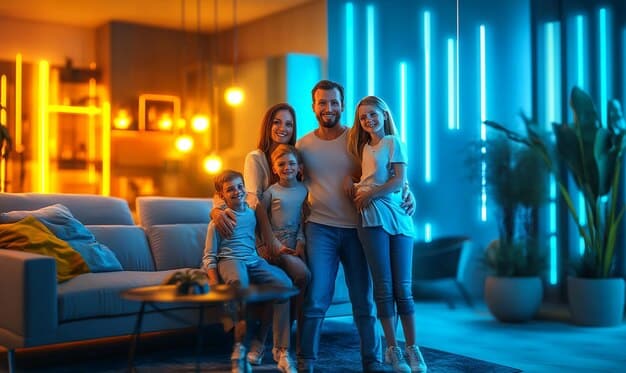
Testimonials and Community Initiatives
Many local utility companies and community organizations in the US have launched initiatives to promote LED adoption, often sharing testimonials from satisfied customers. These personal stories often emphasize not only the financial relief but also the improved aesthetics and functionality of their homes. This collective experience reinforces the proven efficacy of LEDs as a smart investment for US households seeking both economic relief and a more sustainable lifestyle. The positive feedback from these real-world transformations serves as a powerful testament to the value of switching to LED lighting.
| Key Point | Brief Description |
|---|---|
| 💡 Energy Efficiency | LEDs consume up to 90% less electricity than incandescents, significantly reducing bills. |
| 💰 Cost Savings | Higher upfront cost is quickly offset by lower energy bills and extended lifespan, yielding long-term savings. |
| 🌎 Environmental Benefits | Reduces carbon emissions and waste, and are mercury-free making them a sustainable choice. |
| 🏡 Smart Home Integration | Modern LEDs often feature smart capabilities for control, automation, and enhanced living experiences. |
Frequently Asked Questions About LED Lighting Savings
While the exact percentage varies, many US households report significant savings, often between 10% to 25% on their total energy bill, primarily by replacing older incandescent bulbs. The specific amount depends on your current lighting types, usage habits, and local electricity rates, but the reduction is consistently noticeable for most homes.
Absolutely. Although LED bulbs have a higher upfront cost than traditional bulbs, their superior energy efficiency and extremely long lifespan (up to 25 times longer than incandescents) mean they quickly pay for themselves through reduced electricity consumption and fewer replacements. The long-term savings easily outweigh the initial expense.
Modern LED technology has advanced significantly. LEDs now offer excellent light quality, available in a wide range of color temperatures from warm white (similar to incandescents) to cool white and daylight. They also boast high Color Rendering Index (CRI) values, ensuring colors in your home appear natural and vibrant, surpassing older bulb types.
Yes, many US utility companies, state energy programs, and even some federal initiatives offer rebates, discounts, or tax credits for purchasing energy-efficient LED lighting. It’s advisable to check with your local electricity provider or state energy office to inquire about available programs that can further reduce your conversion costs.
Smart LED lights enhance savings by providing advanced control beyond basic efficiency. Features like scheduling, remote control via apps, occupancy sensors, and integration with smart home systems ensure lights are only on when needed and at optimal brightness, minimizing energy waste and offering greater convenience and personalized lighting.
Conclusion: Illuminating a Path to Savings and Sustainability
In conclusion, the question of whether switching to LED lighting can save US households 15% on energy bills is met with a resounding affirmation, albeit with the understanding that specific percentages will vary based on individual circumstances. The comprehensive analysis underscores that LED technology is not merely an incremental upgrade but a fundamental shift towards far greater energy efficiency in home illumination. From their superior energy conversion and remarkable longevity to their reduced environmental footprint, LEDs present a compelling argument for widespread adoption. The initial investment, once a significant barrier, is increasingly offset by substantial long-term savings, enhanced lighting quality, and compatibility with smart home ecosystems, making them an economically and environmentally sound choice for modern households. Embracing LED lighting is a tangible step any US household can take towards reducing utility bills, contributing to a more sustainable future, and enjoying a higher quality of light in their living spaces.


